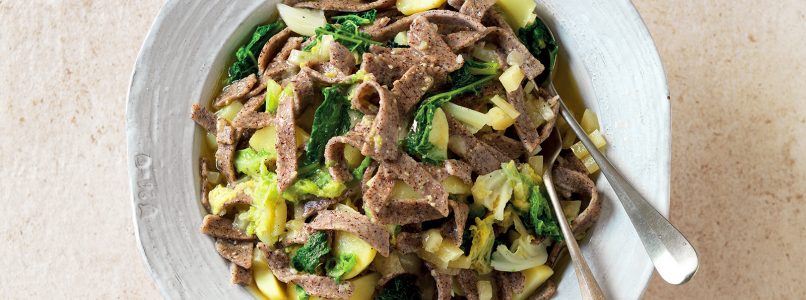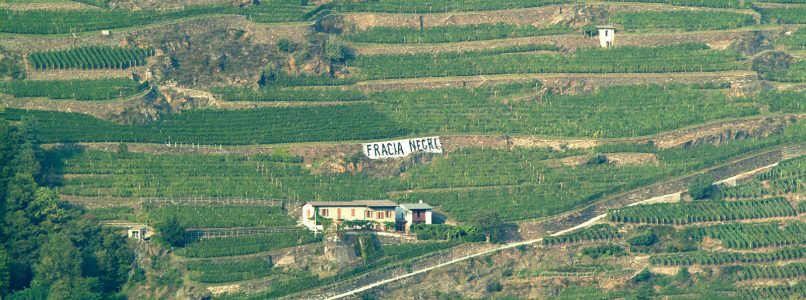The crispy pancakes from Valtellina made from buckwheat, gluten-free. Usually salty, they can also be declined in the sweet version, with chocolate
Teglio, in the province of Sondrio, boasts the practice of growing buckwheat (fagopyrum esculentum, Monch) for more than four centuries and is universally recognized as a place of origin for Valtellina pizzoccheri.
Over time, the cultivation of buckwheat has assumed the identity and identification role of a heritage of cultural knowledge of the territory: the land around the town is colored by the soft flowers of the plant all year round.
Buckwheat is naturally gluten-free since it does not belong to grasses, but is a species of flowering plant in the Polygonaceae family. If in the rest of Italy the cultivation of this plant has almost disappeared, in Valtellina, despite the drastic reduction in local production, it is the basic ingredient of many typical dishes, now famous even outside the Valtellina borders: pizzoccheri, sciàt, polenta taragna and chisciöi.
Among the many local recipes, we asked the super local Mrs. Nadia to prepare us the sciatt (literally sciatt in Valtellinese dialect means toad) that is, crispy pancakes of round shape with melted cheese heart, usually served on a bed of chicory.

Recipe
Ingredients for 4 people
500 g of Molino Tudori buckwheat flour
half a teaspoon of salt
sparkling mineral water
a spoonful of grappa
300 g soft casera cheese or 200 g chopped dark chocolate (for the sweet version)
sunflower oil for frying
Method
Mix the flour, salt and grappa very well with a whisk, adding the water to obtain a soft, but not too much dough: the consistency of the pasta must be stringy. Leave the pasta to rest for about an hour at room temperature and then add the casera cheese cut into cubes of about 2 cm.
When the oil in the pan is boiling, collect a cube of cheese with a spoon, taking care to cover it with the pasta and let it fall into the pan.
Leave the sciatt to brown until afloat and serve hot on a bed of raw chopped chicory.
For the chocolate variant, the recipe is identical to that of traditional sciatt by dipping pieces of dark chocolate in the batter and frying as in the traditional recipe. If desired, they can be sprinkled with a little icing sugar.
They are like cherries … one pulls the other!
Picture of Antonella Catalano.

